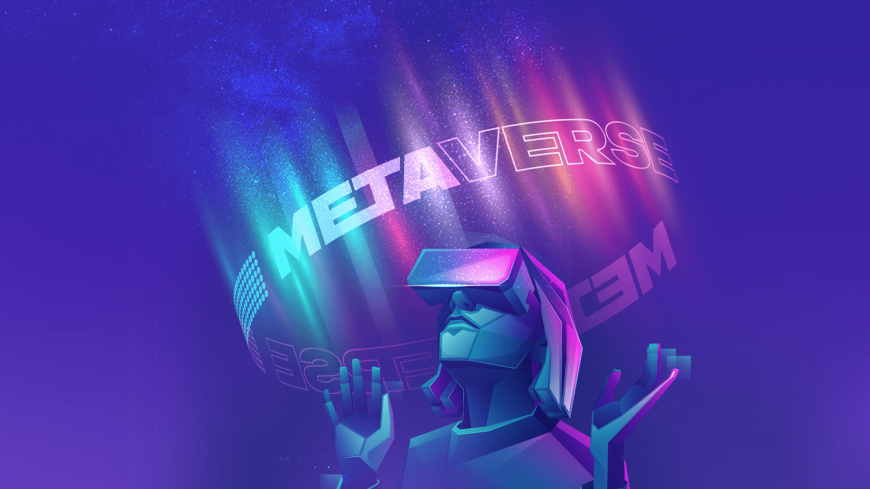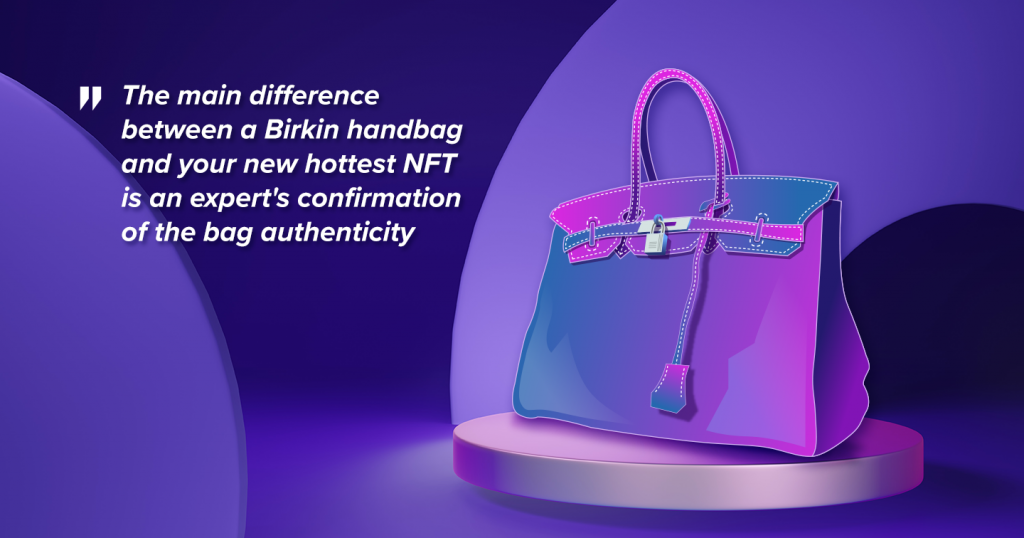The Only NFT / Metaverse Article You Need to Read This Year (Until Our Next One!)

Okay, catchy title aside, our intentions in the following series of articles dedicated to non-fungible tokens and metaverses, is to add our two pennies to the conversation and to hopefully moderate people’s expectations. As a technology provider we’re completely removed from the hype and speculative fervour, so we feel we can provide a more restrained perspective as a counterbalance to some of the more exuberant content that’s out there on the subject.
Now, we’d rather not recapitulate all the “NFT and metaverse for dummies” articles out there, nevertheless we have to start somewhere, so this first instalment will necessarily provide some introductory material, while also tying these subjects together in a manner that provides you with a good foundation for further research. To begin with, a highly abridged introduction to our basic terms is probably in order.
The “for dummies” bit
Very simply put, NFTs are to crypto what luxury items (art, classic cars, antiques, fine wine etc.) are to traditional financial assets like stocks. Where a single unit of a cryptocurrency like bitcoin, or an equity like Facebook (oops, Meta!) are interchangeable (or fungible) with any other unit of the same kind, NFTs, like luxury goods, are unique, collectible, valued specifically because of their rarity, and not fungible, as such.
Now, the main difference between, say, a 1980s Hermes Birkin handbag, and the hottest new digital collectible (aside from one residing in the physical world and the other in the digital), is that you may need an expert to confirm that the Hermes your aunt handed down to you is in fact an original, whereas the blockchain itself takes care of the authentication and ownership of your new Beeple NFT.

Essentially, just like cryptocurrencies attempt to solve the problem of digital scarcity in the world of fungible securities (i.e having a digital asset that can’t be copied), NFTs use a version of that same tech to create collectible digital artefacts that are provably unique.
Okay… but why?
Well, this is going to be more of a leap if you’ve yet to drink the crypto Kool-Aid, but just like cryptocurrencies possess some very interesting characteristics that allow you to do things in the digital realm that were previously impossible, NFTs also greatly broaden what can be achieved in that same realm with mathematically enforced digital uniqueness.
It’s probably beyond the scope of this article to actually get you to drink from that aforementioned Kool-Aid cup, but maybe a little sip is in order here. Indeed, at Devexperts we’re not really in the business of evangelising any kind of technology, however, a couple of brief examples for each use case may be useful here to illustrate the above points.
Say what you will about bitcoin, but it does offer some features that the traditional financial world cannot hope to recreate. Instant decentralised settlement anywhere in the world with zero counterparty risk for a fraction of the cost of performing the same kind of action in the legacy world of centralised institutions. Even the most staunchly anti-crypto commentators would have to admit that this is a quantum leap forward in how we transfer value.
Similarly, NFTs allow you to program all kinds of functionality into them that you simply cannot do in the physical world without all manner of costly legal infrastructure in place.
Take art, which has been the main focus of this current NFT craze (and yes, we do think it’s a craze). In the traditional art world, the artist only gets paid once. Every time the work is exchanged between collectors thereafter, it’s the dealers, galleries and collectors themselves that stand to benefit.
With NFTs, rules can be determined from the outset that the underlying blockchain enforces. For example, to automatically pay the artist’s estate a small percentage of the resale price every time their work changes hands, in perpetuity. Or to make that fee payable to a charity, foundation, or educational establishment of the artist’s choice. It can even be paid fractionally to that artist’s earliest supporters (more on the community aspects of NFTs in a subsequent article).
As you can see, like crypto in general, NFTs allow for the middlemen that extract value at every point of the chain to be disintermediated, and for those who generated that value in the first place to have more of a say.
Understood… but what’s with all this metaverse stuff?
Right, let’s get stuck into that one then, shall we? First of all, no matter what Mark Zuckerberg tries to tell you, metaverses already exist and they have for a long time. In fact, they existed before crypto, and certainly before Facebook (even though you can think of Facebook itself as a metaverse of sorts). Actually, let’s start over.
The current obsession with the concept of the metaverse takes the same logical thread that we followed above from basic digital scarcity (bitcoin and other cryptocurrencies), through digital uniqueness (NFTs), to the very online spaces that we frequent.
Just like bitcoin has gradually become the internet’s store of value, and NFTs are starting to translate certain rarity dynamics from the physical world to the online world, the central idea of the metaverse is to have online spaces governed by the same characteristics that inform crypto at large, and NFTs specifically. In the real world we have a little thing called entropy to enforce all that scarcity stuff, in the digital world we have cryptography.
What are those characteristics? Well, that’s where certain issues arise. It’s also the reason for the somewhat facetious introduction to this section. Those characteristics include much of the crypto ethos you’ll already be aware of. Decentralisation, permissionless access, trustless consensus. In other words, these digital spaces ought to be owned by the community, rather than a centralised entity (like Facebook Meta) that can change the rules as it sees fit.
You may already be sensing where this is heading. If those spaces are to replicate anything like the sort of “realness” of the physical world around us, then we would have to translate some of the scarcity characteristics we discussed above into those digital spaces.
So, you can think of metaverses as places for us to “put” all of our NFT stuff and then hopefully one day to be able to have our digital avatars frequent those spaces, or even take up permanent residence in them.

For example, your house in the metaverse would be an NFT, as would be the parcel of land you purchased to “build” it on, and so on.
The issue? Just like Facebook’s ill-fated Libra cryptocurrency would have been crypto in name alone for the above reasons, the same is true of the company’s enthusiasm for the metaverse. To do it without decentralisation is just to recreate Second Life, but with a different logo.
You just said metaverses already exist… where?
Aside from Second Life? Well, without wanting to stretch the definition to the point of meaninglessness. Your iPhone is actually a metaverse, or at the very least a portal to many metaverses. Try and observe the way you or others around you use their smartphones as if you’ve just encountered the device for the first time. It’s clearly another world that you dip in and out of with a regularity and intensity that renders it as real, if not more real, than the “real” world. The same goes for your social media, and your group chats. Do you have a teenager in the house who spends the bulk of their adolescent existence on a Fortnite server? If that’s not a quintessential metaverse, then what is?
You see, we’ve already created alternative digital spaces and if we’re honest, some of us spend more time in them than in the three dimensional world around us. This is why Facebook’s rebranding seems more like a bandwagon jump (just as Libra did) than anything more ground breaking.
The point now is not to make a new metaverse, or to teach people what they are and how to use them. The point is to make the metaverses we already have replicate some of the characteristics of the real world.
For instance, you can (probably) still comfortably sit on a bench in your local park, enjoying the sunshine, engaged in a conversation with an acquaintance, and the groundskeeper (probably) won’t come and shoo you away for voicing an opinion that the culture at large has deemed as inappropriate. Neither will he attempt to monetise the bench you’re sitting on, or the view you’re enjoying, from one visit to the next. Can the same thing be said of the virtual spaces you frequent? Didn’t think so.
Is it all in a bubble?

Almost certainly so. But so was Amazon back in the day. And just like those luxury items we kicked this article off with, crypto tends to rise and fall in value depending how flush with cash investors find themselves at different points in the economic cycle. It’s no coincidence that NFTs and crypto in general have exploded just as the global economy has had truly unprecedented amounts of stimulus pumped into it in order to stave off the worst effects of the pandemic.
And it’s not just these markets that are looking decidedly bubbly at the moment. NFTs are not a new thing, they emerged right at the tail end of the last crypto bubble in 2017. Back then, just like now, there was an enormous amount of enthusiasm and speculation. However, when the tide turned these highly speculative assets were the first to tumble as investors scurried to get their hands on something tangible, like good old-fashioned US dollars, until the next time round.
So, to conclude, the technology is here to stay, but we have a lot further to go before your grandmother takes these things for granted as she currently does with her Facebook profile. Join us next time for an even deeper dive into this space, as well as more details about what we at Devexperts have been working on.
The second part of our NFT/Metaverse article has been published here.